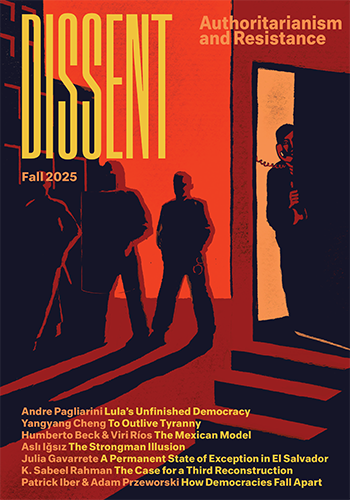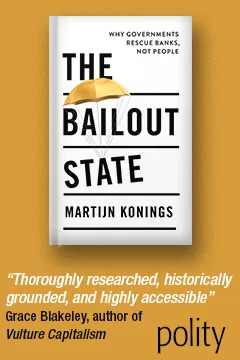The Fight for $15 Can Still Win
The Fight for $15 Can Still Win
Even with an openly anti-labor administration and Congress settling in on Capitol Hill, the fight for a living wage has the wind at its back.

Last Thursday, Fight for $15 activists rallied in some two dozen cities, from California to Kansas to New York, in their second national day of action since the election. With an openly anti-labor administration and Congress settling in on Capitol Hill, the workers’ message was clear: we’re not backing down. And with good reason—while the 2016 elections largely spelled disaster for progressives, the fight for a living wage claimed a set of important and widely overlooked victories at the ballot box, offering valuable lessons for organizing in the age of Trump.
Four states had minimum wage initiatives on the ballot on November 8, and in all four states, voters passed higher wages. In every case, the margin of victory for these bills surpassed Hillary Clinton’s vote margin. In Colorado, Maine, and Washington, Clinton won, but the minimum wage increase won by more. In Arizona, Clinton lost but the minimum wage bill passed by almost 60 percent, the largest margin out of any of these states (the city of Flagstaff also passed its own initiative to raise the minimum wage to $15/hour in 2021). In South Dakota, an initiative to lower the minimum wage for workers under the age of eighteen was roundly defeated, even as Trump won the state by a large margin.
Arizona, Maine, and Colorado’s bills raise the minimum wage by about 50 percent over the next four years, reaching $12/hour in each state by 2020. Washington state’s minimum wage, at $9.47/hour, is already higher than the federal minimum and will be raised even higher, reaching $13.50 in 2020. Each state’s minimum wage will rise with the cost of living after 2020. The Arizona and Washington initiatives also mandate paid sick leave, allowing workers to earn time off for hours worked.
These are real victories for workers and for the economy as a whole. There’s little question that a higher minimum wage is right on the merits: nationally, it would help lift millions out of poverty, reduce inequality, raise living standards, and give workers a fairer share of the profits they create. But the issue is also a political winner: it is clear from polling that minimum wage increases are broadly popular and can even garner support among Republicans (although they don’t support increases as high as those called for by Democrats). A 2013 Gallup poll found that, “In addition to liberals and Democrats, those most likely to favor raising the minimum wage include nonwhites, adults earning less than $24,000 annually, women, [and] young adults”—all groups that Clinton won but struggled to turn out like Obama did. The fact that minimum wage bills passed by larger margins than the Clinton vote is compelling evidence that the partisan divide on the minimum wage is not as strong as one might expect. Will the next generation of Democrats seize on this kind of economic populism to reclaim the country from Trump and his allies in the coming years?
Certainly Trump has been no leader on the issue. Although he flirted with support for raising the minimum wage in campaign statements, he was ultimately as contradictory on the topic as on most others. Mike Pence’s record on the minimum wage is clearer: he opposed raising it to $7.25 when he was in Congress, and has called for eliminating the federal minimum altogether.
It should have been easy for Clinton to distinguish herself, then, but her stance on the minimum wage reflected her campaign’s general antipathy to a strong message of economic populism. During the primary, Clinton’s position was memorably confusing and filled with caveats, as she fumbled between endorsing $12/hour and $15/hour in response to pressure from Bernie Sanders. In the general election, Clinton abandoned the issue almost entirely. As Lynn Vavreck pointed out in the New York Times, “Only 9 percent of Mrs. Clinton’s appeals in her ads were about jobs or the economy,” while more than three-quarters were about “traits, characteristics or dispositions.” Future progressive candidates shouldn’t repeat this mistake: they should commit early and steadily to a higher minimum wage, for both economic and electoral reasons.
With Trump now taking office and both houses of Congress controlled by Republicans, a federal minimum wage increase seems unlikely at best. Trump’s pick for Labor Secretary, fast-food CEO Andy Puzder, embodies much of what the Fight for $15 is fighting against. A multimillionaire who earns nearly 300 times as much in a year as his minimum-wage employees, Puzder is also facing allegations of widespread sexual harassment and wage theft at Hardee’s and Carl’s Jr, the two largest chains he oversees. Not surprisingly, he is a vocal opponent of even a $10.10/hour federal minimum wage.
But the fight for higher minimum wages still has the wind at its back. Three weeks after the election, workers with the Fight for $15 protested and went on strike for the twelfth time, marking the fourth anniversary of their first action. [Disclosure: I worked for the Fight for 15 campaign in the past as a paid employee and contractor of SEIU.] With thousands of participants across the country—the November actions took place in some 340 cities—the movement keeps counting victories: the conversation on the minimum wage has completely shifted, and $15/hour has gone from sounding far-fetched to being instituted in multiple states and cities. According to the National Employment Law Project, November’s minimum wage victories “bring to 19.3 million the total number of U.S. workers for whom minimum wage increases have been approved since fast food workers walked off of their jobs in late 2012.” Minimum wages in California and most of New York will rise to $15/hour in coming years, and Oregon’s will reach $14.75. Seattle and Washington, D.C., along with Flagstaff, will see a $15/hour minimum wage by 2021. Campaigns gearing up in other states and cities still have momentum on their side—particularly in contexts where liberal leaders are seeking to champion local alternatives to Trumpism.
A higher minimum wage is crucial, but it’s not a panacea. Workers also deserve a union and good benefits. And higher pay doesn’t substitute for a functioning social safety net that lessens inequality and makes it less miserable to not work, to raise children, or to retire: affordable housing, universal health insurance, robust food supports, sick leave, vacation time, parental leave, free child care, quality public education, cheap mass transit, even a universal basic income. Our lives should be less beholden overall to what we can make on the job.
But those fights will take time. There is no question they’ll be harder with a President Trump. Minimum wage hikes are winning now, and progressive candidates can win by championing them. We should make sure they seize the opportunity.
Jesse Kudler is a writer and musician in Philadelphia.






